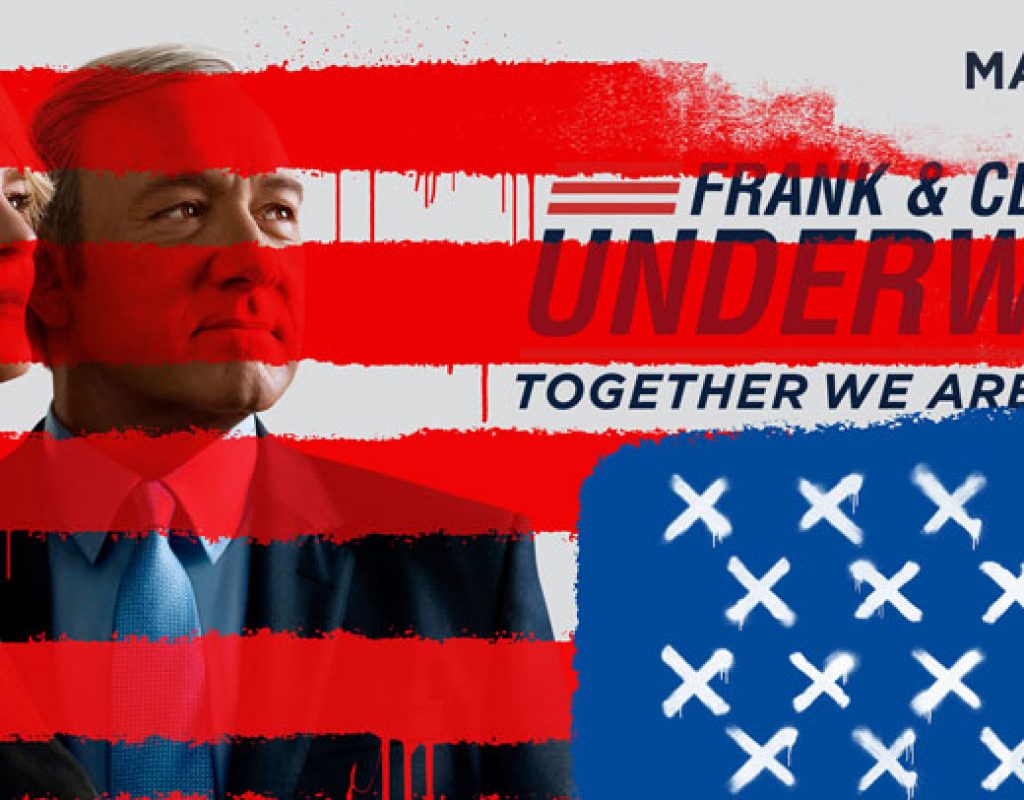Lisa Bromwell, ACE has been working in feature film and TV editorial for more than 30 years. She moved into the editor’s chair in 1992 and has edited more than a dozen feature films and numerous TV series, like the pilot and the first season of In Treatment. She also cut for The Practice, Weeds, Better Off Ted, Cold Case, Gravity, and Criminal Minds. Art of the Cut talked to Bromwell about her work on the Netflix series, House of Cards. (There are specific examples of editing scenes that you can watch if you have Netflix or even a trial subscription to Netflix.)
All previous seasons of House of Cards have been edited on Final Cut Pro7 (including last season!). Bromwell and I chatted as the team was on hiatus before next season, which will be cut on Premiere Pro.
(This interview was transcribed with SpeedScriber. The entire interview was transcribed within 15 minutes of completing the Skype call. Thanks to Martin Baker at Digital Heaven)
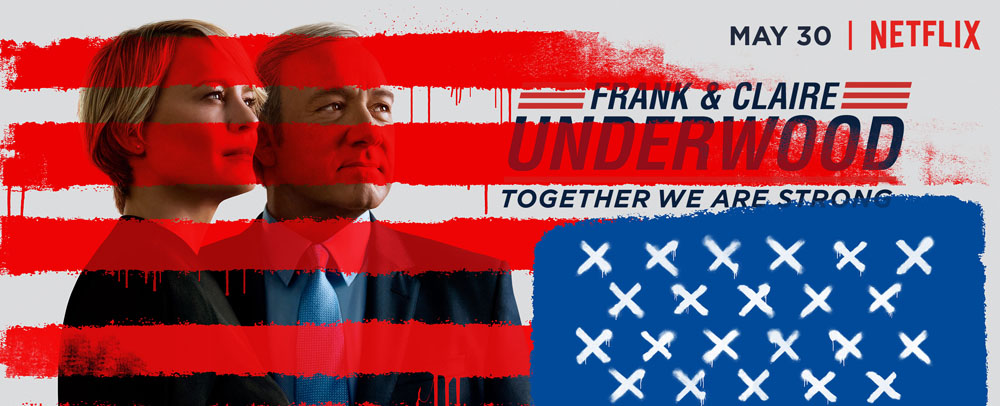
HULLFISH: Where do you start? What guides you in your edit?
BROMWELL: I use the lined script, so I always know what I have. I like to watch a new scene and then wait till the next day to cut it. It doesn’t always work out that way. But at the end of the day, I try to watch the dailies for the scene I’m going to cut first thing in the morning. Just watch it through. Or I’ll watch select dailies at home before I go to work so I get an overall view of the scene and how it’s covered and what’s happening. I like to have at least a few hours before I actually start to work so it can percolate in my mind. Then when I’m ready to start, I sit back and I watch the dailies thoroughly and take notes about what I like in terms of the performance. There’s always a moment in a scene that is the key moment, and I want to make sure I know where I want to be for that moment. Sometimes it’s a close-up, sometimes it’s a wide shot. It’s knowing where that most important moment is, then working to construct the scene around it. Maybe the best performance is in a wide shot and it happens in the middle of a scene, so I’ll construct it with that in mind. Of course, things don’t always go the way you plan and I do something totally different. But I try not to get caught up in too many details in my first pass.
I try to build a scene and get a pass on it where I’m kind of in the right place at the right time. You can tell if you’re going to be able to make a cut work or not. And sometimes rather than get caught up in the details, which can kind of hold up the flow of thought, its best to keep moving forward knowing that I will go back and refine it all later. But I get through full pass, then put it aside and move on to the next thing. I will always review it maybe later that day or in the morning – look at what I’ve done and do another pass on it. Generally, before what I think of as my editor’s cut, I’ve done three passes. For example, say I get the dailies for scene 14 and if I’ve already cut scene 13. After I watch the dailies for sc 14, I’ll rework sc 13, work out the transition between the scenes and continue on cutting sc 14. Then I’ll probably rework sc 14 when I’m ready to attach sc 15. I find that having that small distance on it gives me a better perspective on what works and what doesn’t.
HULLFISH: I’m a huge believer in sleeping on a scene… let it kind of percolate.
BROMWELL: Yeah, you’re not really thinking about it, but it’s there in your brain and it’s kind of working on it. I like to do crossword puzzles and if I get stuck on the New York Times crossword puzzle, I walk away for two hours and go back to it later and you say, “Oh, that’s easy.” Same thing for cutting a scene.
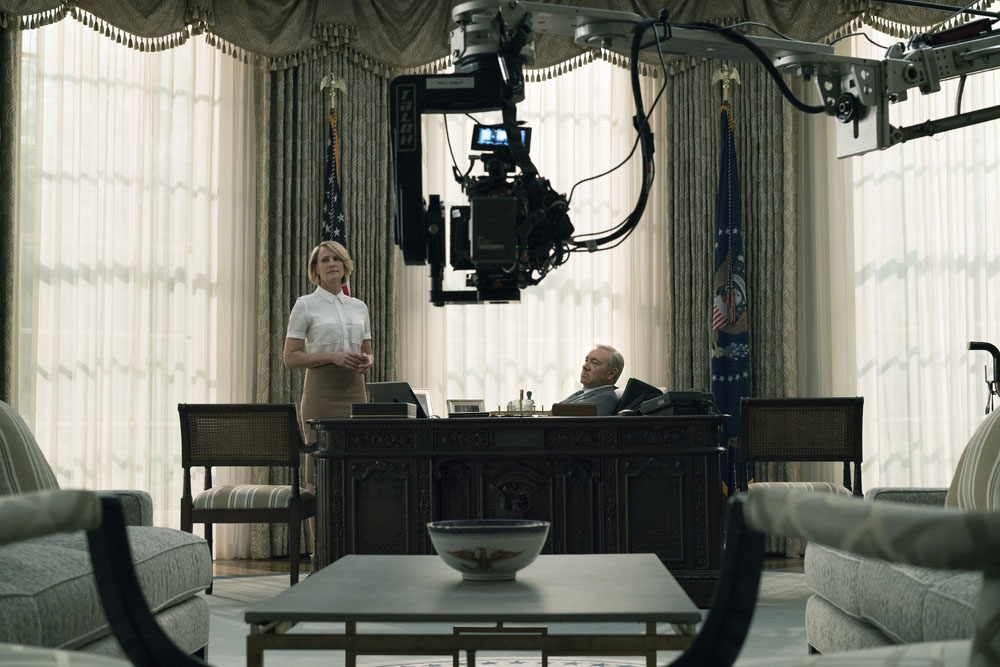
HULLFISH: So you guys have been cutting House of Cards in Final Cut Pro 7 all these seasons right?
BROMWELL: Yes. We. Have.
HULLFISH: How am I going to translate that tone of voice?
BROMWELL: I almost said no to the job because I so detest FinalCutPro. I’ve done a bunch of really low budget films where that was the only option and when I took the job I decided I wasn’t going to hate it. I couldn’t go to work and hate it every day. I was going to find a way to make it work so I did the on-line Lynda.com classes and that helped and we have a really good support staff. I have to say that after all these years it’s as second nature to me as Avid. It’s still irritating in many ways but I don’t hate it actively every minute of every day, which is what I was afraid was going to happen.
HULLFISH: So you’ve cut a bunch on Avid, you cut a bunch on Final Cut Pro. Now, House of Cards is moving to Premiere Pro for its final season.
BROMWELL: The one thing I can say on House of Cards is that they take really good care of the editors. We’ve always had amazingly good support staff. They’ll have somebody spend the day working with me to teach me how to use Premiere and then that person will be there on site when I start cutting for a day or two to answer questions. Fortunately, my assistant knows Premiere and has worked on it on a couple of jobs so he knows it. I know that whatever the bugs are, they won’t be my problem. Somebody else will know how to get around them and whatever problems arise I’ll be able to get my questions answered.
HULLFISH: Well, you’ve also got the rest of the Fincher production team who’s been working on Mindhunter using Premiere now for a while, so they’ve got a lot of the kinks ironed out. I was with the Mindhunter team while they were cutting this summer.
BROMWELL: They had an Adobe guy there full time when they were cutting Gone Girl and he put Premiere on my system, just so I could try to play with it, but until you’re actually working with it…
HULLFISH: There are a couple of episodes that I would love to chat about. There’s one scene in chapter 46 (season 4 episode 7) that has this intercutting back and forth between the Conways and Underwoods. You’ve got the passion of the Conways and then you cut to the passionless Underwoods.
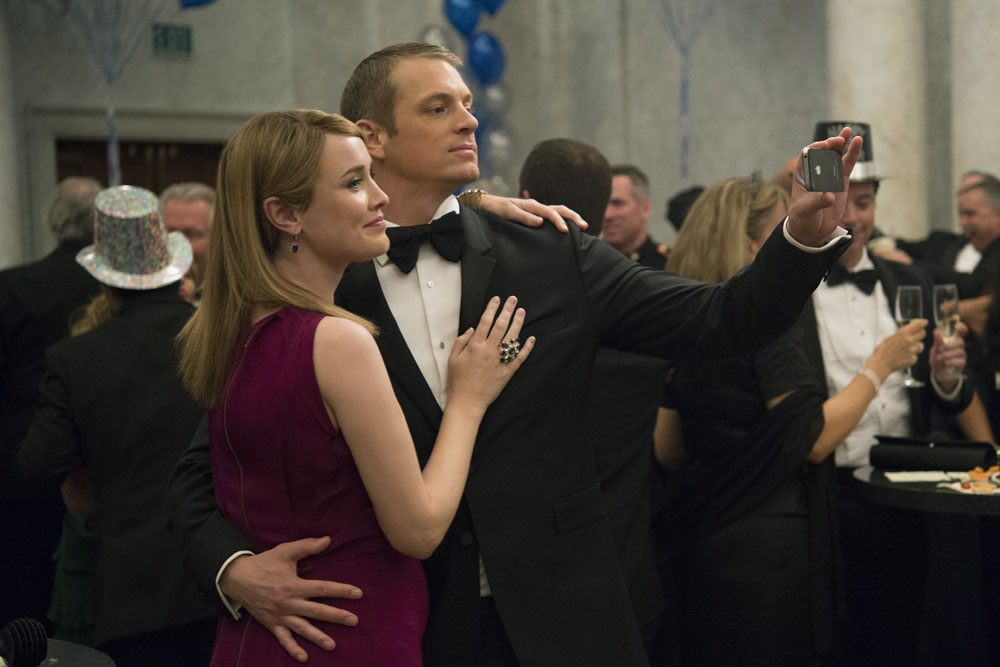
BROMWELL: Originally, they wanted to do the entire episode in a split screen. It was like, “OK. Interesting. I don’t know how that’s going to work.” The original director that was going to direct that episode was all excited about the idea, but he had to drop out. Then another director took over, and the planning for that idea sort of fell away. First, they dropped the idea that the entire show would be split screens and then it would just be sections. In the end, everything that we intercut was supposed to be split screened. But I spent a huge amount of time trying to make the split screen work although it was clear to me it was never going to work. Part of the problem from the get-go is if you have a split screen between the sexy young Conways going at it in the bathroom and boring Frank and Claire… who are you going to look at?
I knew that the splitscreens were a road that we should not be going down, so I started coming up with another way to present it. I have to say, people were on the same page with me pretty early on. The intercuts thing was far more interesting and it was still something that was different. It’s not really what we do on House of Cards.
HULLFISH: That brings up an interesting point. You have to be pretty confident in your choice to be able to say, “Look. It’s not going to work. I could spend forever on this but it’s just not going to work.” That’s a difficult choice to make, isn’t it?
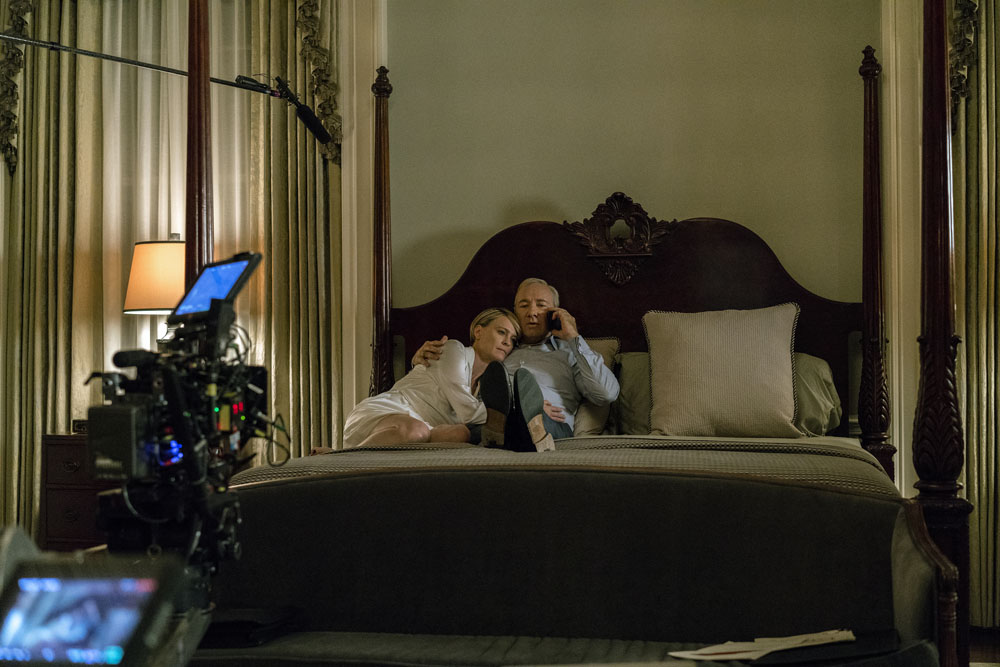
BROMWELL: I suspect that by the time they were shooting it, everybody was having their doubts about whether or not it was really going to work. I tried early on to develop a good rapport with the director. They shoot on the East Coast and we’re on the West Coast. Actually, on that particular episode, the director was in London when we were cutting. I was in L.A. and we had the remote system that works really well. I had him on Skype and we had a really great time working together. I had to really think about it to remember that he wasn’t actually in the room with me. He’s a good guy and he really was open to talking about what works and what didn’t work. I just sent versions. it was really easy. We used PIX with a private folder so nobody else can see what the editor and director are sharing. That’s how we just decided to go down the intercut road. Once you looked at both versions I think it was pretty clear that that the splits weren’t going to work. And then in order to make the intercutting work we just had to reposition stuff as much as we could to make the shots work.
HULLFISH: Because they were framed for a split?
BROMWELL: Yes.
HULLFISH: So was determining the timing for the intercutting something you had to play with?
BROMWELL: It was something I had to play with because it was scripted to happen simultaneously.
HULLFISH: I really like the scene about halfway through chapter 18 (season 2 episode 5) when Claire and Frank are in her office rehearsing how it’s going to go with the NRA lady, because in that scene Claire would start to say something or Frank would be saying what the NRA lady was going to say, and you would smoothly go to the gun lady finishing the line.
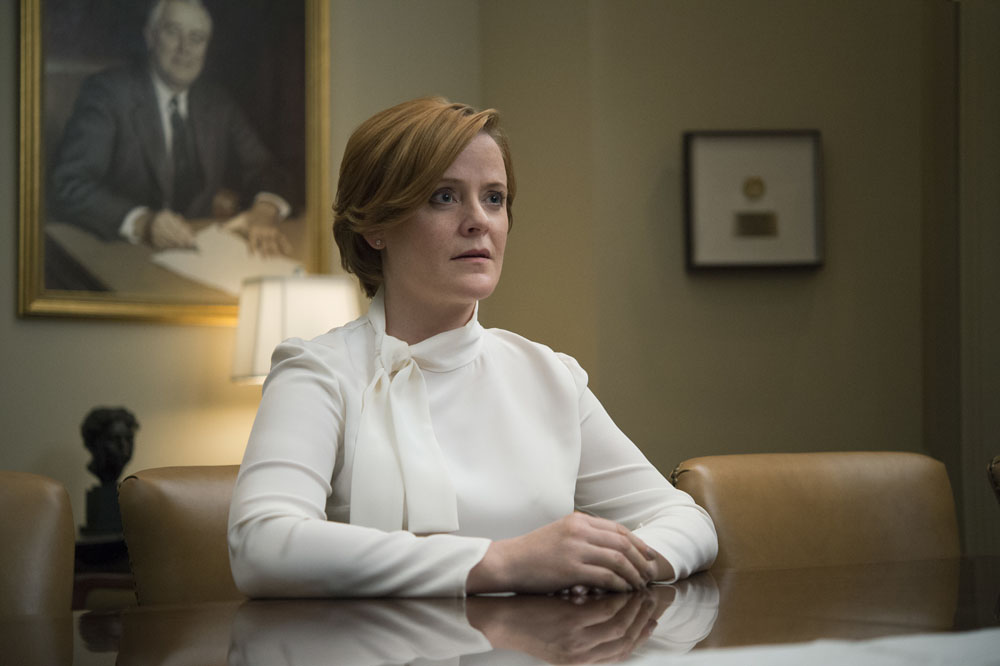
BROMWELL: So the way they shot it is that both people did all of the lines so I could choose when to make that change from Frank saying her line to her saying her line. Those intercut scenes were ones I worked on a little bit every day until I turned in the editor’s cut because there’s a lot of ways to go and I would find this perfect transition but then getting back around… it was just a tricky balance to find. And you just sit there for a long time and just keep working.
HULLFISH: And I noticed also in those intercuts some really nice pre-lapping of dialogue. The other thing I really loved about those two “practice” sessions with Claire and Frank prepping for meetings is that one starts with the practice and goes to the meeting and the other one starts with the meeting and goes to the practice.
BROMWELL: They were a lot of fun to do.
HULLFISH: That episode also has Claire talking to the Joint Chiefs about sexual harassment.
BROMWELL: Yeah. That’s one of my favorite scenes. I tried to have no line on camera. (laughs)
HULLFISH: I was going to say that! That scene is SO much on reactions! It’s also a huge amount of overlapping dialogue everybody steps on every other person. Nobody waits to finish a line. Obviously, you are the one that was in control of that, but nobody waits to finish line before the next person starts. They’re all overlapped.
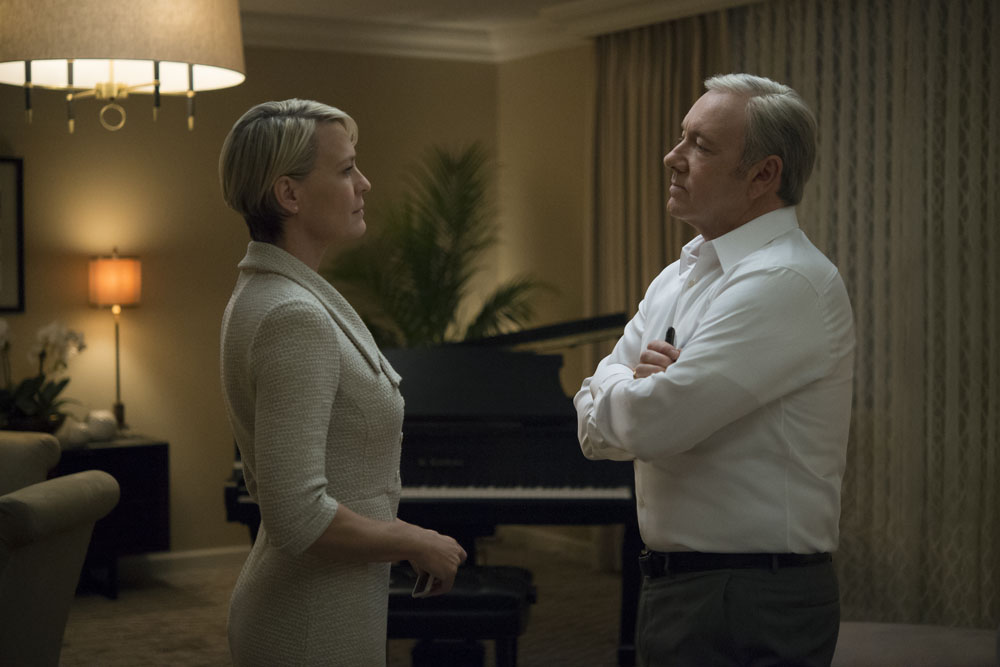
BROMWELL: Yes. And it’s all on reactions. You could turn off the sound and know exactly what’s happening. Every woman out there has had a man telling her what the right thing is. We’ve all been there. So it didn’t matter what they were saying. At the same time, you didn’t know exactly what Claire was up to but you knew she was orchestrating this whole thing to put those guys in their place. I just love that Congresswoman. Those two military guys, they have great faces.
It was something Fincher had talked to me about when I met with him. When I interviewed for the job he talked about how he wanted the show to be cut untraditionally for television. What’s important about this show and what makes it good is that: it’s never about what’s being said. It’s always about something else. And people are always manipulating each other. And we’ve got these fantastic actors. Kevin Spacey. Robin Wright. You can always cut to them. They are always doing something interesting, but sometimes it’s more interesting to play against that and cut to the person they’re manipulating to see their response. David envisioned the show being cut like that. I think about it all the time. And I have to say just having that interview with him, made me a better editor because it made me go a little bit deeper in how I thought about the scenes and I knew that nobody was going to give me the note of “Put that person on camera.” If you find the perfect reaction, nobody will give you that note, but with network television it’s like, if somebody’s talking, cut to them. It’s so boring and it makes the words so important. I think often in House of Cards that it doesn’t matter if you understand the specifics of what they’re talking about. It doesn’t matter if you know you know how Frank’s trying to manipulate the Chinese government. All you need to understand are the personal dynamics and the personal dramas of who is screwing over who and how they’re reacting. That’s far more important than understanding any of the details. I swear, half the time I don’t understand the details of what people are doing. It’s not that important, it’s not why people watch the show.
HULLFISH: That scene was so on-target with the whole mansplaining concept. He doesn’t even let Claire finish her thought before he’s rebutting her.
BROMWELL: Yeah yeah yeah. It’s that man thing, stepping all over her, then Claire sticks the knife in and twists it.
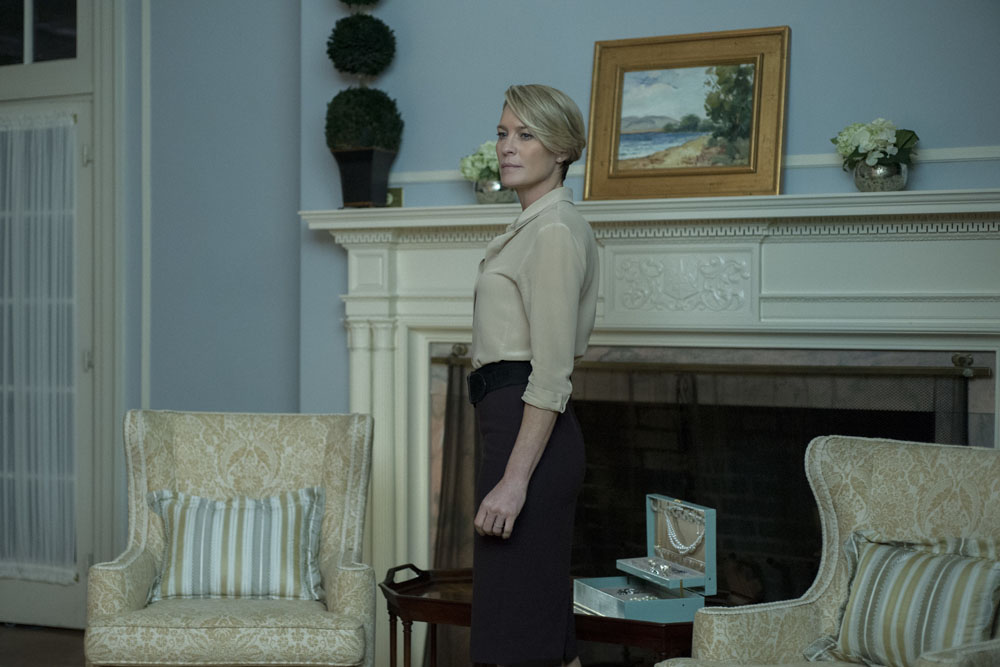
HULLFISH: And then, of course, the great reaction when the First Lady walks in and the two generals are like, “Oh man we’ve been taken.”
BROMWELL: Exactly.
HULLFISH: Another great one is chapter 39 (season 3 episode 13) about 40 minutes in: a big argument between Frank and Claire. There’s just a great use of reaction shots, different sized shots and the music doesn’t come in until almost the end of the conversation. You really kept it very dry.
BROMWELL: My favorite part of that scene is when they’re on either side of the desk and Frank is saying, “You keep saying it’s not enough, not enough!” and Claire says, “No! You’re not enough.” And the music comes to a crescendo and at that moment… dead silence… and that silence lasts for a really long time. And in that silence, you understand that Claire has blurted out something she never intended to say and that Frank is so angered by that. It’s what I love about House of Cards that we could do that. I have to say that that scene never changed from the editor’s cut I turned in. I temped it that way and Jeff Beale, our composer was like, “Oh, this is exactly the way to do that.” There was never any argument to change the way the music came in or where it came in and where it went out. I think too many shows rely on music. Much more than they need to. And it’s the lack of music – the lack of sound – that can work just as well. If you’ve already chosen the right sound and music, having silence becomes an equally important element in storytelling.
HULLFISH: After that climax, there’s a long silence and a series of reactions without words. That had to have been kind of hard to determine right? Because a lot of times your pacing of a scene is based on dialogue. And there’s no dialogue. So how do you decide how long you sit on Frank speechless?
BROMWELL: What I tried to do is to literally make it as long as I could. I actually think there were places where they weren’t moving where I slowed it down a little bit where you couldn’t tell that I manipulated the speed. I was just like, “How long can I make this and still get away with it?” You could always cut back on it later. But I remember trying to find every frame I could use.
HULLFISH: It’s an interesting thing after that scene is a scene that some people would say, “Oh, it’s just shoe leather. You should cut that out.” If you remember immediately after that there’s a fairly long scene of a couple of guys just walking through the White House to come back and tell Claire that she’s got to go to New Hampshire with Frank. But the audience needs that time to go, “Whoah! That was powerful.” You can’t just cut to the next scene right? You need a breath. It’s also a change of time.
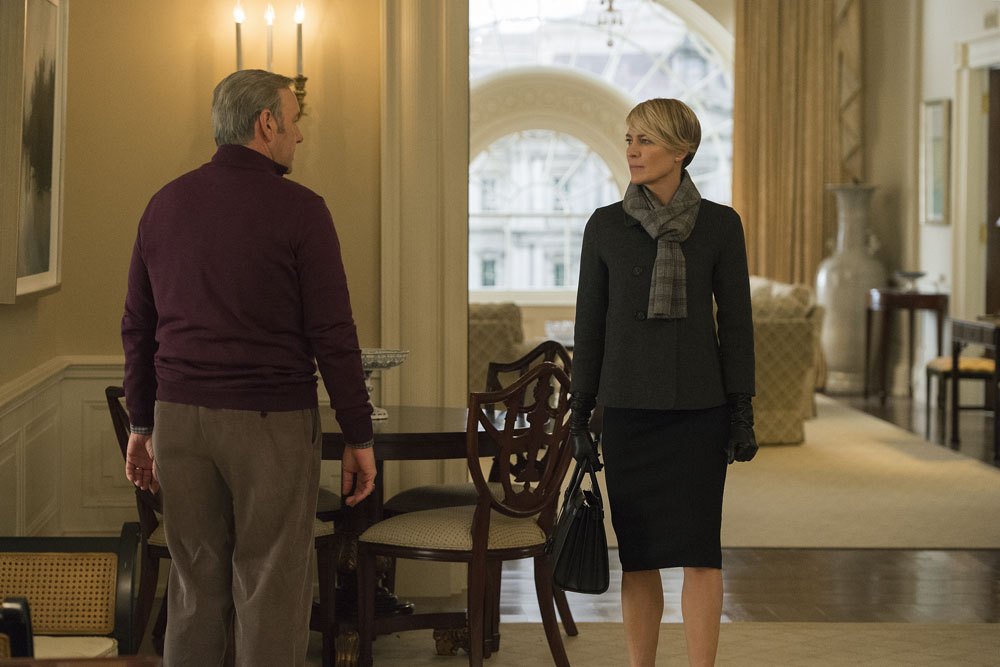 BROMWELL: You would have lost the impact. They go to Claire and she’s sitting there looking at a picture. And then she comes out and says, “I’m leaving you.” If you got to that too fast you’ve lost the impact of it because you can’t have two big charged moments that close to each other. You need the time to process, because Frank grabs her by the face and you think she’s just going to fold to him so you need to have time to think, “Claire’s been screwed-over and she’s been put in her place.” You need time to think that. It’s the nice thing about House of Cards that we get to do those things and we tend to not get stylistic notes. I really appreciate that.
BROMWELL: You would have lost the impact. They go to Claire and she’s sitting there looking at a picture. And then she comes out and says, “I’m leaving you.” If you got to that too fast you’ve lost the impact of it because you can’t have two big charged moments that close to each other. You need the time to process, because Frank grabs her by the face and you think she’s just going to fold to him so you need to have time to think, “Claire’s been screwed-over and she’s been put in her place.” You need time to think that. It’s the nice thing about House of Cards that we get to do those things and we tend to not get stylistic notes. I really appreciate that.
HULLFISH: You’ve cut a bunch of features and a bunch of TV shows, like Criminal Minds. What’s the difference between the TV work you do and the feature work you do? Is there something when you switch between them where you say, “I have to get my head in a new place?”
BROMWELL: No. The biggest difference between television and features is that to be successful on television you have to be able to come up with solutions to all the problems yourself. There’s a lot of people making a television show but there’s also a lot of episodes so nobody has the time to come and sit with you in your room and figure out how to fix a problematic episode. There’s always some crisis on the set because they’re always shooting something or the script isn’t ready and they’re about to start shooting it.
So for an editor to keep getting asked back, you’ve got to be the kind of person that can come up with a solution. They’ll tell you, “This doesn’t work and that doesn’t work.” You’ve got to figure out options and present them.
In features, everybody is working on one thing. And by the time you’re in editing, nobody’s shooting anything and nobody is still writing the script. So when there’s a problem, everybody’s in your room helping to solve the problem. It’s a little bit of a different skill in terms of how you work with people.
I really enjoy that really close collaboration you have with the director when you’re on a feature. You don’t really have that in episodic. In the best of all possible worlds in episodic you’ll have that relationship with one of the executives. But again, they’re always being called off to go solve another problem. So I think that’s the biggest difference. With features, you’re working with a group of people together solving the problems and you have to have good people skills. In episodic, world, it’s much more likely that you just have to figure it out on your own.
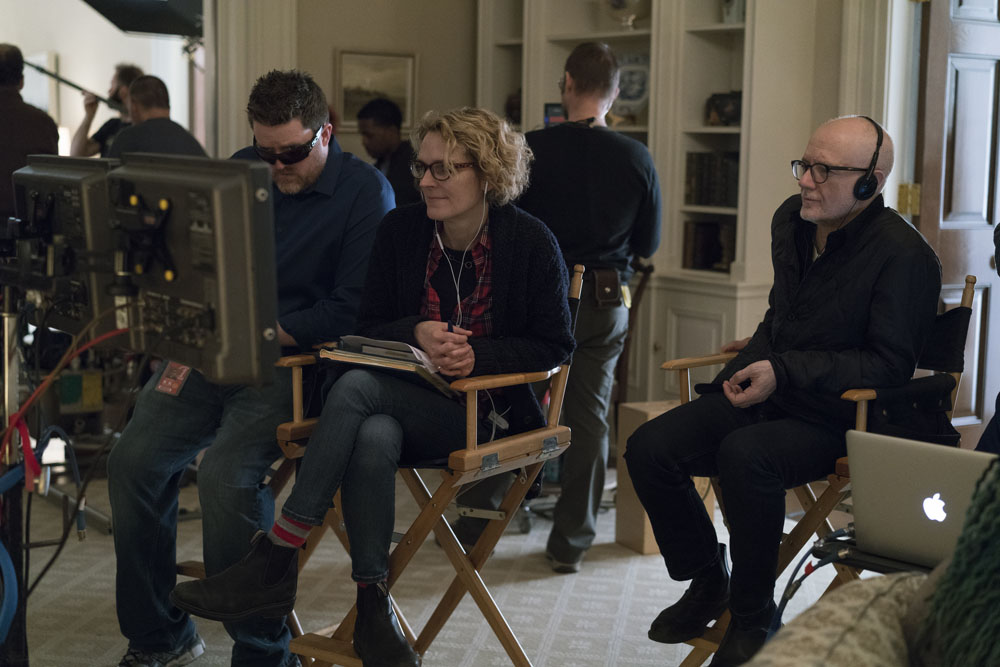
HULLFISH: In episodic TV, that relationship with the director is like serial monogamy right? Where the first week you’re devoted to the director and his vision. And then after those four or five days: “See you buddy!” Now you’re working with producers or the show runner and now your loyalty has switched.
BROMWELL: And with a feature, your loyalty is to the director. It’s my job to support the director in a feature and support the director’s vision because it’s not my vision. So I try to mostly keep my mouth shut if there’s a dispute between the director and the producer. But I’ll share my opinion with the director in private. In television it’s like you’re totally loyal to the director but as soon as they’re gone, they’re gone. And if what the director did isn’t working, I will say to the producers, “We did this and I agree it doesn’t work.” I don’t feel any obligation to make the director’s vision work if it doesn’t, but I do on a feature.
HULLFISH: But while the director is with you in episodic you do feel like you need to make it work.
BROMWELL: Yeah absolutely. However, I think it’s part of my job to have an opinion. And if something the director’s doing isn’t working, or if in my first cut what I think works is markedly different from what I think the director intended, I’ll do the version I think works best, and I’ll put that in the cut I first present. But I’ll also do the version I believe the director intended, and I’ll do my best to make it work. Then when we’re working together, I can say, “I know this isn’t the way you saw it”. And I’ll show the version of the scene that’s more of the director’s intention. Then there’s a discussion, “What wasn’t working for me was this and this and this. And so I tried it like this.” And we can work all ideas and maybe even come up with something different altogether. Bur directors generally acknowledge that I know the show better than they do and they all want to turn in an episode that is consistent with the show’s style.
HULLFISH: Talk to me about that idea of being the steward for the feel of the show, because the editors in episodic TV generally do know the show better than the director. So how do you interact with the director when you know you might know it better than him or her?
BROMWELL: I have a tendency to be very opinionated. And that’s something I have to try to rein in a lot.
HULLFISH: You have to have something to say and you have to have an ego to be an editor, I think. But you can’t have such a big ego that it’s stepping on your ability to let the director have this vision.
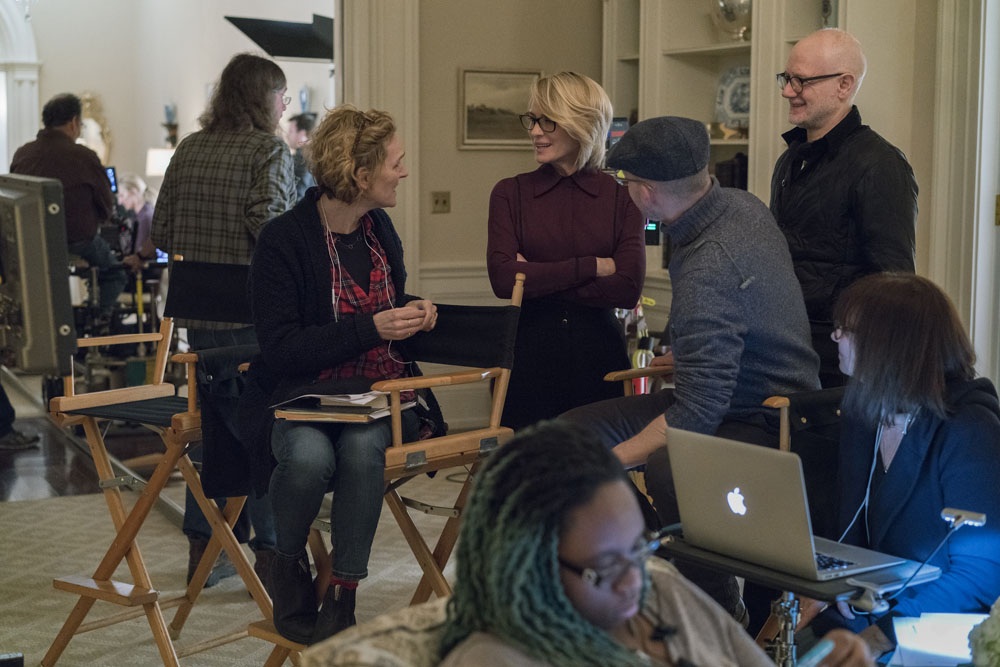
BROMWELL: Right. Right. You have to keep reminding yourself: It’s not your vision. It’s the director’s vision. Or in television it’s the writer. I have to say, by and large, the whole House of Cards experience is a really good one. I really like the way the show is run. Most directors acknowledge that I probably know better how the show works and they are looking to me for guidance. They’ll say, “I tried this thing but I’m not really sure that it’s House of Cards. Can we make it feel like House of Cards?” And when a director approaches me that way, I will do everything I can to make what they want feel like House of Cards.
HULLFISH: With the speed of working TV, do you have to change your methodology from when you’re working on a feature?
BROMWELL: I still work the same way. We shoot 10 days per episode and we cross board so we’re getting dailies for 20 days. There’s always a scene or two that I work on for the whole 20 days before I’m happy with it. On a feature, however many days they’re shooting, there’s always a scene I’m working on for the entirety of that time before I’m happy with it. So I don’t think I change.
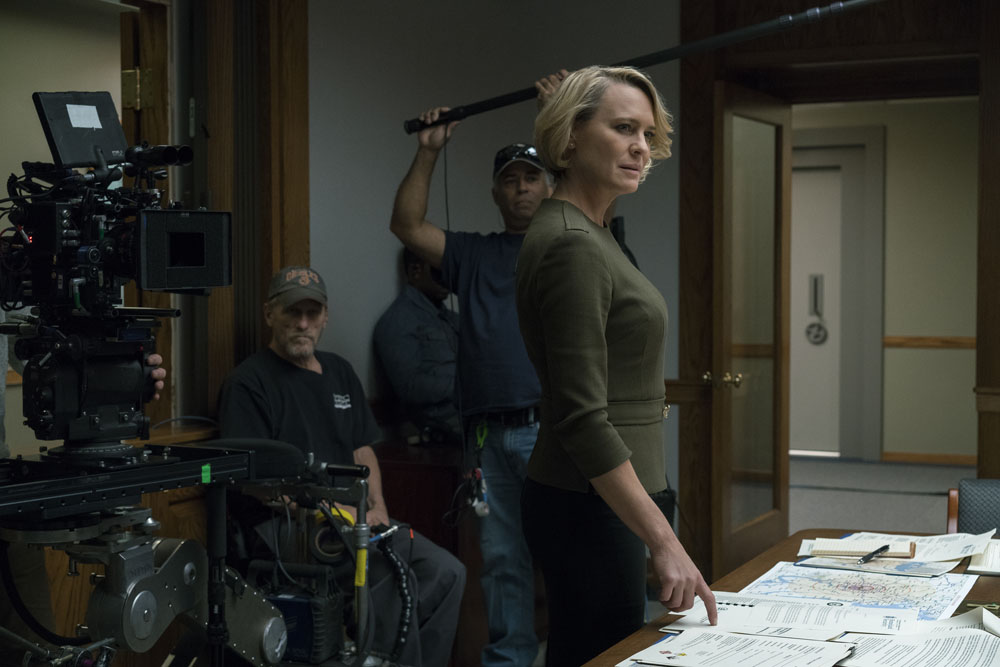
HULLFISH: Any words of wisdom?
BROMWELL: Stay in a shot until you need another piece of information. And that’s why you cut, because you need another piece of information. And too often people who are starting out they’re like where can I cut? You’re telling a story you’re not cutting.
HULLFISH: Why are you cutting? What’s the reason for the cut? What piece of information do I need? Or what am I what am I about to reveal that I shouldn’t?
What do you look for in an assistant editor? Is skill at actual editing important at all?
I like an assistant to be another set of eyes for me. I do want somebody that wants to be an editor because I want them to pay attention. Do you like the scene like this? Or like that? Which one is working? Especially when there’s a problem you get tunnel vision and all I can see is the problem and maybe I’ve solved the problem but I still can’t see it. I want my assistant to come in here and take a look at this and tell me what they think. So I really value that because when you’re alone making all those decisions one after another after another after another. I want an assistant who is comfortable saying “No that’s terrible. That that doesn’t work at all.” I try to foster that with people. It’s a private space just you and me in the room we can say anything we want to each other. So that matters to me. When I have an assistant, the first time I show them something I can tell if they’re going to be a good assistant by the feedback they give. Do they have good judgment? You can tell. I had an assistant once and the first time he looked at something all he could talk about were technical things. And I told him, “That’s not what I’m looking for.” and he totally got it, and he learned it and he’s a fantastic assistant.
HULLFISH: But he was concerned with maybe continuity issues or something and you said, “No, what I care about is the glint in the eyes.”
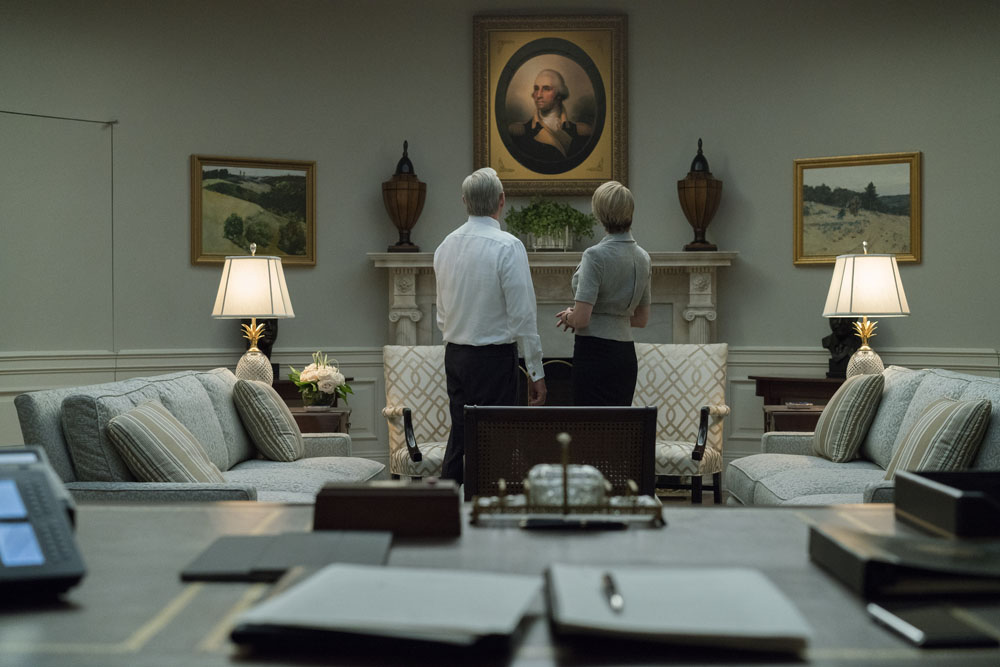
BROMWELL: Right. He noticed that Claire’s hair was different in one shot and the other. I said, “I don’t care about that.” Sometimes I feel like I’m the least observant editor because I miss a lot of those things continuity-wise because I’m focused on something else. I’m trying to tell the story. Now, if the continuity scene is glaring and you keep noticing it after the scene is polished, Well clearly it’s something I have to pay attention to. But if you’re in the story if you’re in the right place at the right time you’re caught up in the emotion of the moment that continuity error? Nobody’s going to notice it. When I was an assistant editor on a feature, they had to do a reshoot for something and they got the color of one of the guy’s shirts is wrong and you know what? Nobody noticed. It just went right by you that in the middle of the scene his shirt changed colors.
HULLFISH: Great story. It was wonderful talking to you, this was filled with great information.
BROMWELL: Thank you. Great talking to you too.
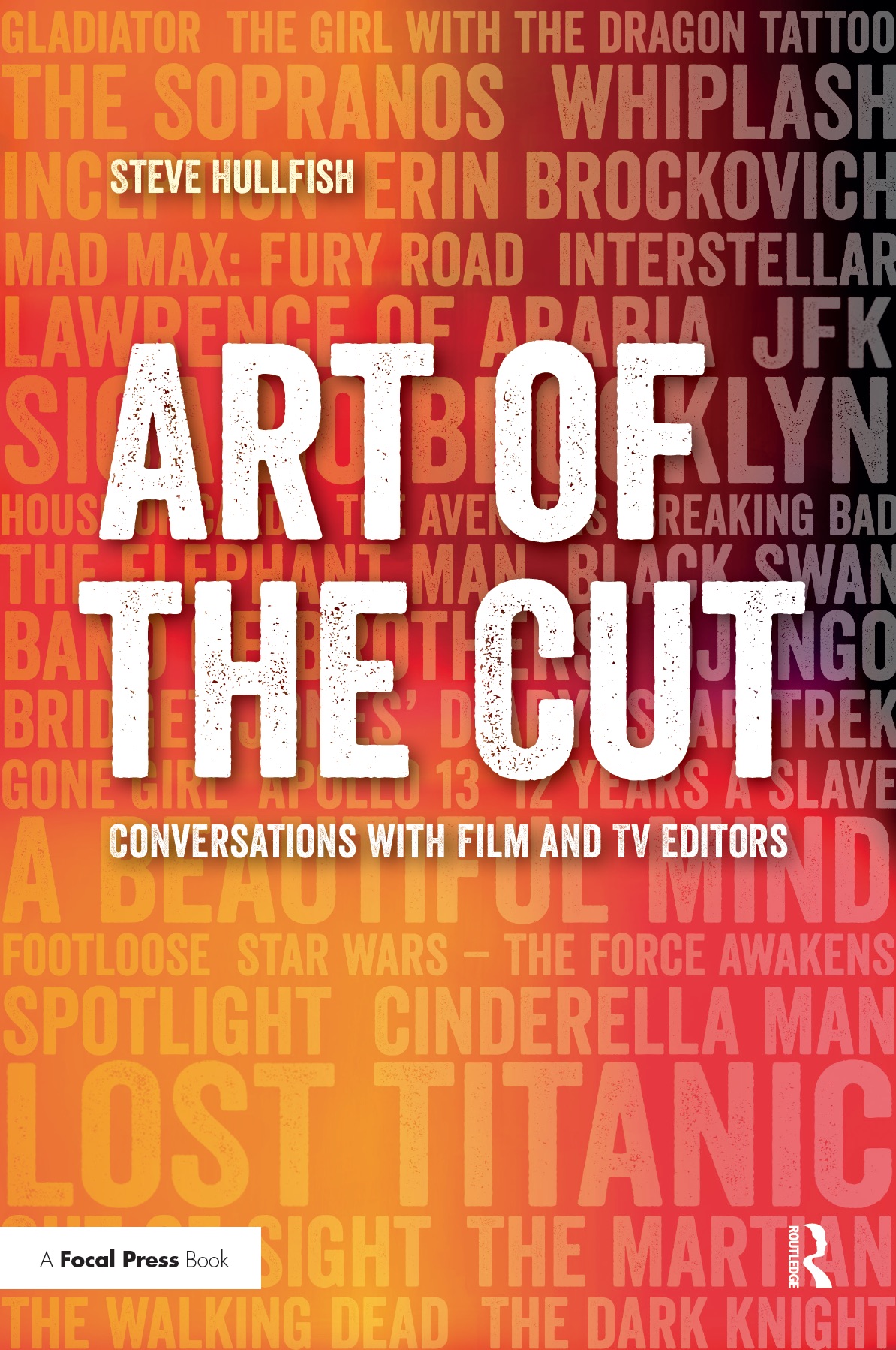 To read more interviews in the Art of the Cut series, check out THIS LINK and follow me on Twitter @stevehullfish
To read more interviews in the Art of the Cut series, check out THIS LINK and follow me on Twitter @stevehullfish
The first 50 interviews in the series provided the material for the book, “Art of the Cut: Conversations with Film and TV Editors.” This is a unique book that breaks down interviews with many of the world’s best editors and organizes it into a virtual roundtable discussion centering on the topics editors care about. It is a powerful tool for experienced and aspiring editors alike. Cinemontage and CinemaEditor magazine both gave it rave reviews. No other book provides the breadth of opinion and experience. Combined, the editors featured in the book have edited for over 1,000 years on many of the most iconic, critically acclaimed and biggest box office hits in the history of cinema.

Filmtools
Filmmakers go-to destination for pre-production, production & post production equipment!
Shop Now